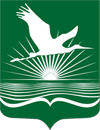Please use this identifier to cite or link to this item:
https://rep.polessu.by/handle/123456789/33041| Title: | Ecological and mycological assessment of the air environment of poultry houses and methods of its improvement |
| Authors: | Gunashev, S. Abduragimova, R. Mikhailov, M. Lemiasheuski, V. Melnikova, D. Padilo, L. |
| Keywords: | ecological and mycological assessment environment of poultry houses |
| Issue Date: | 2024 |
| Citation: | Ecological and mycological assessment of the air environment of poultry houses and methods of its improvement / S. Gunashev, R. Abduragimova, M. Mikhailov [et al.] // Genetic Resources : V International Scientific and Practical Conference, Divovo, Russia, September 19-22, 2024 / editors: V. V. Kalashnikov, A. M. Zaitsev. – Volume 149. – 01013. – (BIO Web of Conferences). |
| Abstract: | The sanitary state of the air environment in the conditions of industrial poultry farming with the concentration of a large number of poultry in a limited area increases the possibility of aerogenic spread of pathogens of various diseases. A significant amount of opportunistic microflora and fungal spores also accumulate in the air of poultry houses, which can cause mass disease in poultry. Constantly keeping poultry indoors in poultry farms leads to a decrease in the resistance of the bird's body. Moreover, unfavorable phenomena are aggravated by deionization of air, the complete absence of ultraviolet insolation, and an increased level of mycological contamination, which reduces the immunobiological reactivity of the body and contributes to the emergence of a number of diseases. Methods. Bacteriological studies were carried out on materials from poultry farms in the Karabudakhkent and Khasavyurt regions of the Republic of Dagestan. Temperature and air humidity parameters were determined according to generally accepted methods. The dust content in the air was assessed by the gravimetric method. Air analysis for mycological contamination was carried out using Czapek agar medium. After the growth of colonies on the surface of Czapek's medium, the species composition of the fungal cultures was determined and their toxicity was determined in laboratory animals. Results. In the air samples studied, fungi of the genus Aspergillus, Mucor, and Penicillium were isolated. Our studies of poultry house air found that 41.5 % of the total spores belonged to molds of the genus Penicillium, 3.5 % to Aspergillus and 55 % to the genus Mucor. Conclusions. The indicators of the temperature and humidity conditions of the air environment of the poultry house were within the limits of zoohygienic standards and met the requirements. Mycological and dust pollution of the poultry house air environment is increased during the daytime, especially during the period of feed distribution and feeding of poultry with the release of fungi from the genus Penicillium, Mucor and Aspergillus. |
| Appears in Collections: | Публикации сотрудников / Publications of the teaching stuff of Polessky State University |
Files in This Item:
| File | Description | Size | Format | |
|---|---|---|---|---|
| Ecological_and_mycological.pdf | 1.58 MB | Adobe PDF | View/Open |
Items in DSpace are protected by copyright, with all rights reserved, unless otherwise indicated.
